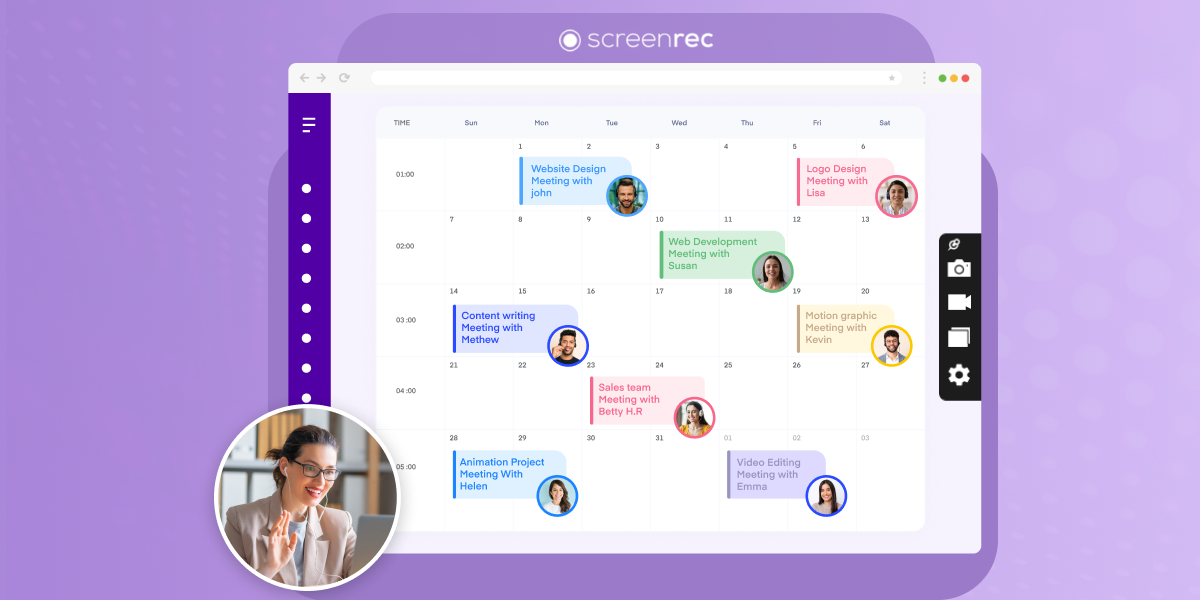The Most Effective & Weird Time Management Techniques for Remote Work
Whatever the future may hold, one thing is clear – remote work is here to stay. Both businesses and self-employed individuals have learned that working from home offers a variety of advantages, ranging from increased personal flexibility to reduced expenses in terms of gas and office space.
At the same time, many remote workers have discovered that it’s difficult to manage their time wisely when surrounded by the distractions of home. Today, let’s take a look at some of the most effective – and somewhat weird – time management skills and techniques that you can use to maximize your remote work productivity.

Dress For The Job
“What do clothes have to do with remote work time management?”, you may wonder.
Well, science says they can have a major impact on your psychological focus and your overall mood. When you dress for work, your brain gets into gear and prepares to work hard for the duration of your shift. But what about if you slide into your desk chair to complete a day of remote work… in your sweatpants?
Odds are, you won't be able to focus properly, let alone manage your time effectively. Therefore, it's a good idea to manage your time by dressing as if you were going into the office. You don't necessarily have to wear a full suit, but put on some slacks, a dress shirt, and a tie. In no time at all, you’ll find yourself cracking away at your work objectives as if you were back at corporate HQ or your office desk.
Stick To A Work Schedule

Besides taking regular breaks, this is one of the best time management tips for remote workers. You can easily manage your time for remote work by drafting and sticking to a schedule.
When remote employees first get on the job, many of them don’t keep track of time at all. They “clock in” whenever they please, only to discover that they have whittled away too much time in phone calls and social media browsing and don’t have enough work hours left in the day to get all their important tasks done.
You can avoid this negative outcome by sticking to a schedule that mimics the flow of an in-office workday. For instance, if you would normally clock in at 9 AM at the office, start working from home at 9 AM as well. If you would normally clock out at 5 PM, do the same thing at home.
Not only will this help you transition to a remote work environment much more easily, but it will also help you keep track of your daily energy levels and make sure you focus readily to make more money. After all, 75% of freelancers working remotely make just as much money as they did when working full-time. Schedules are effective, exceptional tools for work from home time management: use them.
Time Your Breaks (And Work Sessions)
The Pomodoro technique is a time management productivity trick that involves working for 25 minutes, taking a short break, then working for another 25 minutes, on and off again in a sequence until you get to a longer break. This is one example of how you should time your breaks and consider timing your work sessions as well.
By timing your breaks, you won’t accidentally spend too long sitting on the couch or watching TV. You’ll also be able to gear up your brain and get it in the right mindset (or “grindset”) when the time comes to buckle down and get some work done. It’s easier than you think to be distracted with all your favorite things at home, so time your breaks to avoid a panicked rush to get everything done at the end of the day.
Listen To The Right Kind Of Music

One of the secrets of how to manage work from home is to, well, get in the mood. You might be tempted to bring up your Spotify playlist and listen to music while working remotely. Unfortunately, if you listen to music with a lot of complex notes or lyrics, you may accidentally distract yourself instead of practicing good time management for remote work.
For better results, listen to abstract, calming music or “lo-fi” tracks instead. This type of music can help bolster productivity and assist with focus, plus it won't distract you since part of your brain won't constantly fixate on what the singer says.
Use Colors To Boost Focus
This is hardly something you’d expect to see on a list of ways to manage time at home. Oddly enough, certain colors can have positive impacts on focus and time management for remote workers. Color psychology suggests that certain shades or hues are better for energy, such as blue, green, and even yellow.
Your own favorite productivity-boosting colors might differ. But the core principle is the same. Decorate your home office or desk with colors that allow you to focus or hone your thoughts. Stay away from chaotic or clashing colors that distract you.
Let In The (Natural) Light

Our bodies are naturally attuned to the rising and setting of the sun through the circadian rhythm. Keep your shades open and let in as much natural light as you can. This will help you manage your time wisely since:
- You’ll feel energized and ready to work in the morning
- You’ll have a natural, short-term dip in the afternoon
- You’ll have a second wind to finish up your work in the late afternoon and evening
- You’ll be ready to clock out as the sun starts to send around 5 PM
On top of those benefits, letting in more natural light to your remote workspace will help you sleep better and avoid feeling sleepy while driving at night. Studies show that driving after twenty hours without sleep is the equivalent of driving with a blood alcohol content of .10%, greatly increasing the odds of an accident. Listen to your body and prioritize getting plenty of rest each night.
Stimulate Your Sense Of Smell
Did you know that certain fragrances can help you focus during the day and manage your time wisely? It’s true!
Scented candles, essential oils, and other fragrance spreaders are the perfect tools for this productivity hack. Specifically, you should target scents such as peppermint and cinnamon, both of which can focus your mind and fight off mental fatigue. On top of that, these fragrances can stimulate concentration and may even boost your memory.
This helps with time management since you’ll be less likely to let your mind wander or lose track of what you are doing. Plus, lighting a candle helps to make your remote workspace more comfortable and enjoyable to spend your time in.
It’s About Managing Focus More Than Time
As you can see from the above tips and techniques, time management when working from home is much more about managing your focus and energy levels compared to really keeping track of the clock. In fact, when you work remotely from home, you don't have to worry so much about doing everything by a specific time (except for adhering to work-mandated deadlines, of course).
You don’t have to worry about commuting, nor do you need to necessarily account for “clocking in” on the dot at a particular moment. Still, it’s crucial to manage your time wisely so you get all of your daily tasks done and so you don’t fall behind on projects, especially those where you work with team members and clients.
Manage your energy and mood at home during the workday, and time management will follow naturally in the majority of cases.
Conclusion
In the end, managing your time while working remotely is possible. If you master it, you’ll be able not only to be as productive at home as you are in the office. You’ll also be able to enjoy working from home in perpetuity, whether you’re an employee or the owner of your own business.
Don't be afraid to think outside the box and experiment with unconventional methods to find what works best for you. With a little creativity and a willingness to try something different, you can overcome the challenges of remote work and excel in your professional life. Remember, the key to success lies in consistently refining your approach and staying open to new ideas. Happy time managing!
















DON’T MISS OUT
Get updates on new articles, webinars and other opportunities: